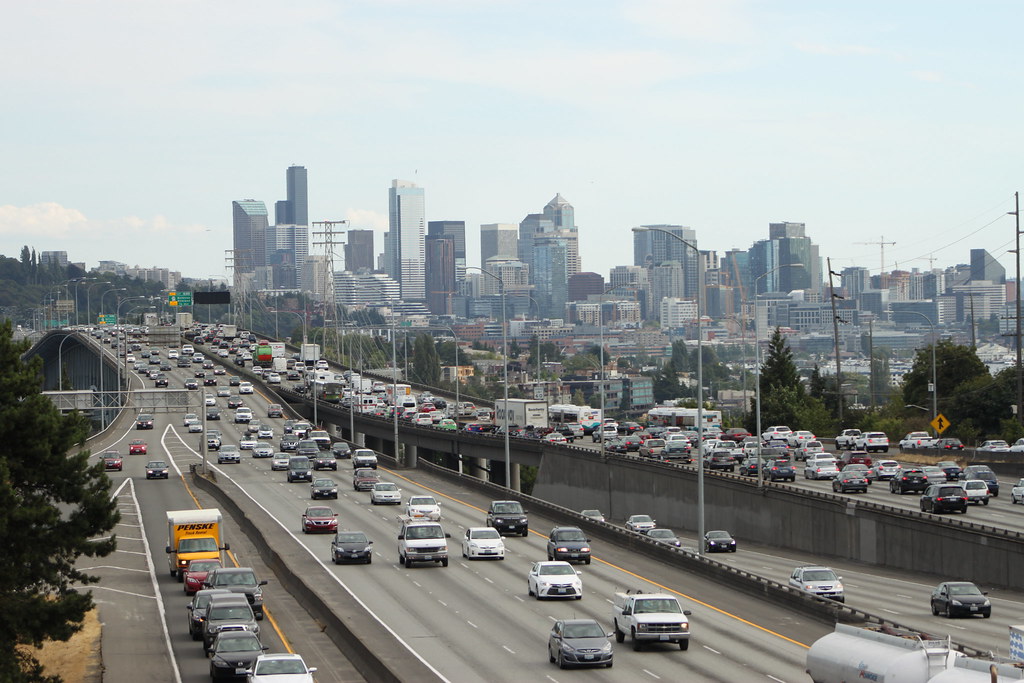Prepare for longer winter road closures, care of vaccine mandated WSDOT firings

A Washington State Department of Transportation (WSDOT) short-staffed due to COVID-19 vaccine mandates combined with a winter predicted to be colder and wetter than normal could mean a perfect storm for drivers navigating the state’s sometimes treacherous passes.
WSDOT lost more than 400 employees – out of a total workforce of 6,800-plus – in October due to Gov. Jay Inslee’s vaccine mandates for state employees.
A recent presentation to legislative staff by WSDOT, as reported by the Washington Policy Center (WPC), indicates that this winter travelers should expect longer road closures due to storms and avalanches because the agency will not be able to provide its usual level of service.
A Friday blog by Barbara LaBoe of WSDOT communications essentially confirmed WPC’s take on the agency’s Thursday morning legislative presentation.
According to the WSDOT blog, drivers can expect the following:
“Some roads and passes will be closed longer than normal during and after significant storms.
“Some roads will not get the same level or service, may be only plowed minimally or will have snow and ice on the roadway for longer periods of time. Some areas may not be staffed 24/7.
“Especially during large storms or long-lasting ones, we won’t have a deep enough ‘bench’ of staff to respond 24/7 for several days throughout the storm.
“Some lanes of the freeway system may have snow and ice while crews focus on keeping just one or two lanes open.
“Lower speed limits in areas with variable speed limits.
“There may be slower responses to crashes and other emergencies, and it may take longer to clear major crashes or slide-offs.
“Less attention to secondary routes and recreation areas as crews focus on higher priority roadways.”
WPC’s blog by Mariya Frost, director of the Seattle-based think tank’s Coles Center for Transportation, was critical of WSDOT.
“WSDOT watered down the impact of the mandate in creating this problem by pointing to the 2020 hiring freezes and 2021 ‘nationwide hiring challenges, an ageing workforce near retirement, and a competitive labor market,’” Frost wrote.
“WSDOT’s presentation minimized the culpability of its management for the risks by saying that ‘pass closures happen every winter for a variety of reasons, including spin outs, crashes, drivers unprepared for conditions, avalanche control, or unsafe weather conditions.’”
A shortage of workers was already affecting the agency, according to WSDOT Communications Director Kris Rietmann Abrudan.
“Our staffing challenges are complex. WSDOT had them before the mandate and while the mandate was a contributing factor, it was certainly not the only one,” she said. “Compared to Nov. 15, 2019 – a more typical pre-pandemic winter – we were down 142 positions as of Oct. 1, 2021. After the Oct. 18 mandate another 151 staff in those positions separated or retired from the agency for a total of 293 fewer winter ops positions filled compared to a typical winter.”
LaBoe noted her blog’s list of what drivers can expect this winter isn’t new per se.
“All of the examples listed in the (WSDOT) blog are approaches that take place every winter,” she said, “but they may be more frequent this year.”
Frost also leveled criticism at WSDOT for plans to remove snow and ice only on one or two lanes, rather than all lanes.
“This, in and of itself, will create serious mobility and public safety issues,” she wrote.
LaBoe explained the agency’s reasoning.
“Focusing on keeping a few lanes of a multi-lane highway plowed and open during heavy storms is a long-time practice of our and other agencies; it means traffic can keep moving rather than shutting down the entire roadway in order to plow every lane,” LaBoe said.
“As plows can’t be in all places at all times, this also happens at times during even normal plowing when snow continues to fall between plow trips over a stretch of road,” she said. “As weather and staffing allows crews to catch up, all lanes will be plowed, but this approach helps keep people and goods moving until that’s possible.”
Abrudan noted that “closures are rarely due to weather and mostly due to drivers not being prepared for conditions.”
“Context is crucial which is why we share it,” she added. “Our goal no matter if it’s a legislative briefing or a blog is to be transparent about what people should expect and what they can do to assist.”
Another frontline agency pressed into service to respond to crashes and clear snow passes is the Washington State Patrol, which lost 127 people to the vaccine mandate.
“The vacancies are spread out across the state impacting some areas of patrol differently than others,” said Chris Loftis, WSP communications director. “We have a century of experience on our state’s roads and know where the problems are likely to occur, so we are mobilizing resources accordingly.”
He added, “But in general, we are moving resources where needed and using overtime to backfill in critical response situations and weather events, so we are hopeful that other than the occasioned episodic impact, the public will not see a reduction in service.”
On multiple occasions, Inslee has dismissed concerns about significant disruptions in state services due to the vaccine mandate.
“I am confident that state services, health care, and educational instruction and services will continue with minimal disruption,” Inslee said in a written statement on October 18.
A week earlier Inslee made a similar prediction.
“The state has been diligent in the contingency planning for scenarios after the October 18 vaccination deadline,” the governor said. “The sky-high vaccination rates we’re seeing should settle any concerns. There will not be massive disruptions in state services.”
Washington is home to 15 mountain passes.
“For Snoqualmie Pass – our busiest cross-state pass – the average daily volume is about 28,000 vehicles, thought there is a slight dip in winter, especially during storms,” LaBoe said.
This article was originally posted on Prepare for longer winter road closures, care of vaccine mandated WSDOT firings



